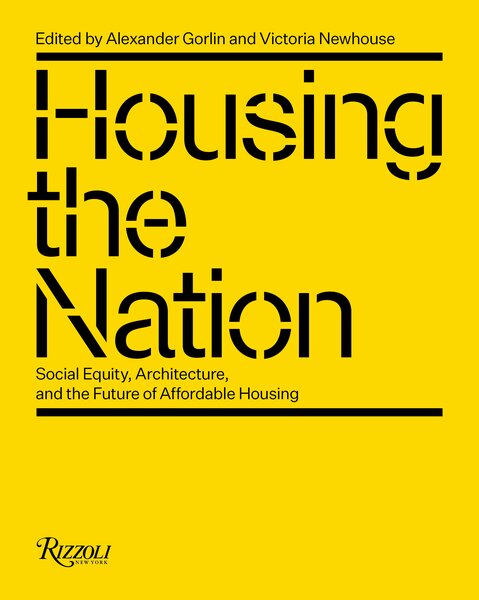A new book of essays from scholars, architects, and advocates seeks to answer that question—and its editors Victoria Newhouse and Alexander Gorlin hope it makes a difference.
Architecture and urban planning are known to be fairly divisive topics. But every now and again, they can help bring people together.
For Victoria Newhouse and Alexander Gorlin, a belief in the importance of cities and buildings has been at the center of a 40 year-long friendship, uniting two rather different personalities in a common cause. Newhouse herself has lived a number of lives—a trained architecture historian with multiple books and articles to her credit, she spent nearly two decades running her own scholarly publishing house, all while earning a reputation (in tandem with her late husband, media entrepreneur S.I. Newhouse) as a discriminating art collector. Gorlin, for his part, has been no less active, both as a design thinker and a practitioner: since 1987, his eponymous New York-based office has piled up a lengthy catalog of civic as well as residential work, while his books, research, and public lectures have made him a prominent staple on the city’s architecture scene. Now, the pair of fellow travelers have teamed up on a new endeavor, aimed at bringing their shared passions to a broader audience.
Due out from Rizzoli this coming March, Housing the Nation: Social Equity, Architecture, and the Future of Affordable Housing is a collection of 18 essays from some of the country’s leading experts, each exploring the titular problem from a different perspective. Co-edited by Newhouse and Gorlin, the project has taken the duo the better part of three years, and has seen them cover a lot of ground—mentally speaking, at least. After months cooped up finalizing the text, the two traveled to one of the hotbeds of New York’s current affordable housing struggle—the Bronx—for a lengthy walk-and-lunch chat (much compressed here), telling Dwell all about their research into the issue and how they got here.

How did you two find your way into architecture, into housing, and into this ongoing collaboration with each other?
VICTORIA NEWHOUSE: Alex and I have known each other for a long long time. He was my chief Le Corbusier expert when I had my non-profit publishing house and foundation; that was about 40 years ago, 1980 or something. I’d read an article of his; I can’t even remember where.
ALEXANDER GORLIN: After that, we’d go on these architectural tours together. We went to Lakeland, Florida together to see the Frank Lloyd Wright university campus there. And then we went to Akron, Ohio, to see the Coop Himmelb(l)au museum, and to Berlin, to see Daniel Libeskind’s Jewish Museum there. And to Paris.
NEWHOUSE: I had lived briefly in Paris, years before—for reasons I won’t go into! While I was there, the arts publisher George Braziller hired me to supervise his operations in France; it really had nothing to do with design, just art history, but when I returned to New York I found that he had fired his architecture editor. And he said, Victoria, you are the new architecture editor. Not too long after that I quit, and signed up to get an MA in architectural history. That was about 1975.
GORLIN: For me, the interest in design started when I was a little boy: I didn’t just play with blocks; I would create whole cities in my parents’ living room. So architecture was always there, although the interest in housing—I grew up in Queens, and there really wasn’t any public housing around. That started later, when I was studying at the Cooper Union, in the ’70s, where there was still that echo of the Bauhaus, which had been so focused on social housing.
NEWHOUSE: I think I got interested in housing after Alex showed me some of his designs for affordable housing projects. I became intrigued by what it was, how it developed, how people were handling it. And then of course the whole crisis of housing started to really hit the news. Eventually it just felt impossible not to pursue it.
So you started this journey towards a book. What was the first step?
GORLIN: Actually we sort of started here, in the Bronx—we did a major tour of the borough together. We looked at the Via Verde project in Mott Haven, and at the Twin Parks developments, from the ’70s. We did that all pretty much on our own starting two years ago, and then turned that into an article for the AIA New York chapter’s magazine.
NEWHOUSE: Via Verde really was one of the most outstanding projects we saw. And of course Alex had taken me to see some of the projects in the South Bronx that his firm had done. I’m a big fan of their work. In any case, our article got a very strong response, we had interviewed a lot of people for it, and we felt it would be possible to expand it into a book. Fortunately we got invited by Rizzoli to do just that.
You’ve both written books in the past; what made this one different, what was the process like?
NEWHOUSE: It was hard to find contributors. When we first started talking to people, trying to find high-profile figures in the field, we kept finding that everyone was already committed to other projects.
GORLIN: It made it easier that we’d worked together before—not just on the AIA article, but a couple other pieces as well. Our basic rule to ourselves was, we’ll make it 4000 words, 18 essays. And then we wrote the introduction together, which went very smoothly.
NEWHOUSE: The focus really is on those contributors. We have Christopher Hawthorne, the former architecture critic of The Los Angeles Times, writing about the role of design and what’s been done in California. Another essay is from Andrés Duany, from Florida, writing about prefabrication. And we got Robert Kuttner, the editor and journalist, writing about the need for social housing today. Everyone really wrote very well. And only one or two really needed prodding to turn in their text on time.
So, what are the lessons you think you’ve both learned from all this? Where do you think (or hope) the affordable housing field goes from here?
GORLIN: When you look at the book, you can see that until really about 20 years ago, the only model for affordable housing was 20th century public housing—these degraded Corbusian towers, like you see everywhere in the Bronx. We have David Burney writing about NYCHA, and that was pretty much all there was. Now, for example with our projects in the Morrisania neighborhood here, there’s so much more: supportive housing, for example, is really key, providing people not just with homes but with job placement and social workers. That wasn’t as commonplace before, and it really started with Rosanne Haggerty, who has a major essay in the book and whose non-profit Common Ground [now called Breaking Ground] has done amazing work to stop homelessness.
NEWHOUSE: Really our objective for the book was to make a difference. We emphasized to all of the contributors that we wanted to end on an optimistic note—to talk about what could be done to improve the housing situation in this country. The point was to spur people to think about it, people who mattered. We’ve sent the book out and gotten some marvelous blurbs for it from people like Senator Chuck Schumer; from Darren Walker, the president of the Ford Foundation; and from Shaun Donovan, the former Secretary for Housing and Urban Development. Our prime hope for the book is to reach people who can have an impact.
GORLIN: It’s definitely a consciousness-raising type book—which is especially important right now, since it’s an election year. For us, writing and editing it felt like a labor of love.
Top image of Nehemiah Spring Creek in Brooklyn, New York by Michael Moran.
Related Reading:
Habitat for Humanity Doesn’t Just Give Away Houses
This Non-Profit Wants to Help You Turn Your Building Into a Co-op
Read More
By: Ian Volner
Title: Where Do Affordable Housing Experts Think the U.S. Crisis Goes From Here?
Sourced From: www.dwell.com/article/victoria-newhouse-alexander-gorlin-housing-the-nation-interview-aed02140-87f34d3a
Published Date: Wed, 06 Dec 2023 13:02:18 GMT
Did you miss our previous article...
https://trendinginbusiness.business/real-estate/clothing-and-furniture-designer-nick-sugihara-strives-to-make-items-that-last
.png)





